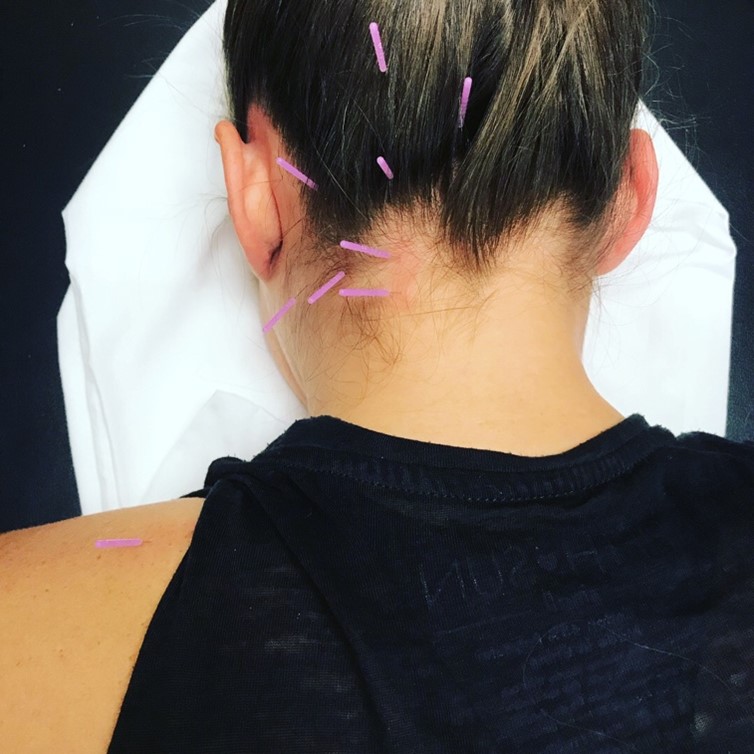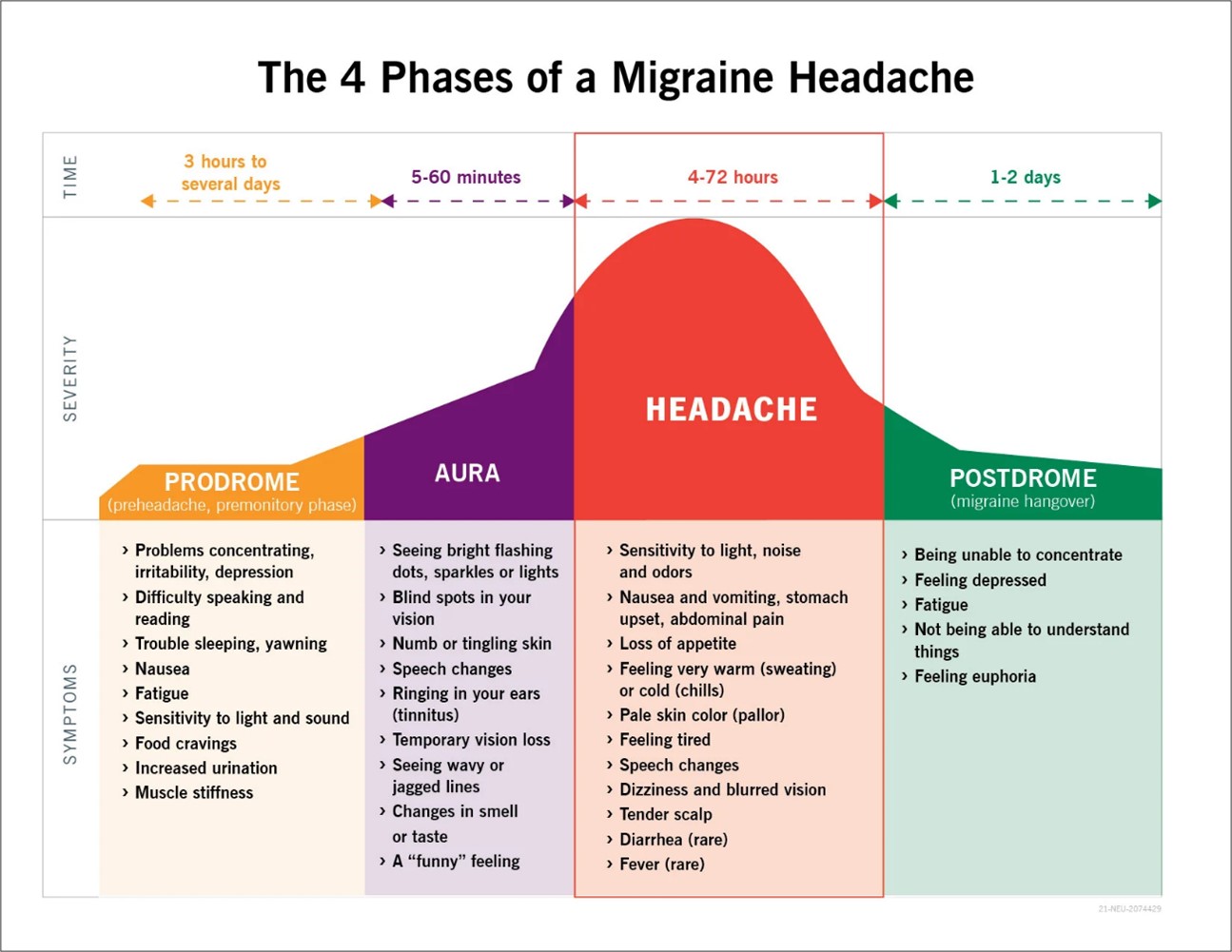This Unique Protocol May Help Your Headaches
Are you suffering from chronic migraines and headaches? Dry needling might be the solution for you! But first, let’s differentiate between migraines and cervicogenic headaches, as oftentimes these get mistaken.
Cervicogenic headaches include neck stiffness, reduced range of motion, pain limited to one side of the neck, and pain may worsen when you turn your head. Migraines usually follow a consistent pattern of 4 stages. Please keep in mind that not all patients with migraines will experience these symptoms. See image below:
The 4 Phases of a Migraine Headache
 Dry Needling for Headaches
Dry Needling for Headaches
Dry needling is a very safe modality used by many healthcare providers across the globe. Dry needling differs from acupuncture in that it does not follow meridians and acupoints, although a lot of points do overlap. Typical dry needling sessions for headache patients consist of 4-8 small monofilament needles inserted into the top of the cervical spine underneath the cranium. These needles will only be about 3cm in  length. You do not need to worry about your therapist hitting your brain or brainstem, this would require a fully inserted 6-7cm needle in length. Needles will be left in the target area for 10-20 minutes and your therapist may apply electrical stimulation to the needles for further benefit.
length. You do not need to worry about your therapist hitting your brain or brainstem, this would require a fully inserted 6-7cm needle in length. Needles will be left in the target area for 10-20 minutes and your therapist may apply electrical stimulation to the needles for further benefit.
One of the main benefits of dry needling is to assist with relaxing muscles that can create tension type headaches and migraines for people. Dry needling also offers pain relief, anti-inflammatory effects, assists with tissue repair, creates natural opioids, creates cortisol production to assist with pain relief, increase blood flow, clears the neuromuscular junction, releases histamine and heparin, and aids muscles to return to normal resting length.
In a systematic review, it was concluded that dry needling should be considered for the treatment of headaches and may be used alone or in combination with other treatments. In this systemic review, they utilized 8 different studies to help draw their conclusion. One study found dry needling alone and dry needling combined with manual therapy both effectively decreased headaches, more so when combined with manual therapy.
In conclusion, dry needling could potentially help decrease or even eliminate your headache. If you are still hesitant about dry needling and how the whole process works, make sure to discuss with your physical therapist at your next appointment. All it could take is 10-20 minutes of your time to have a great impact on your quality of life.








